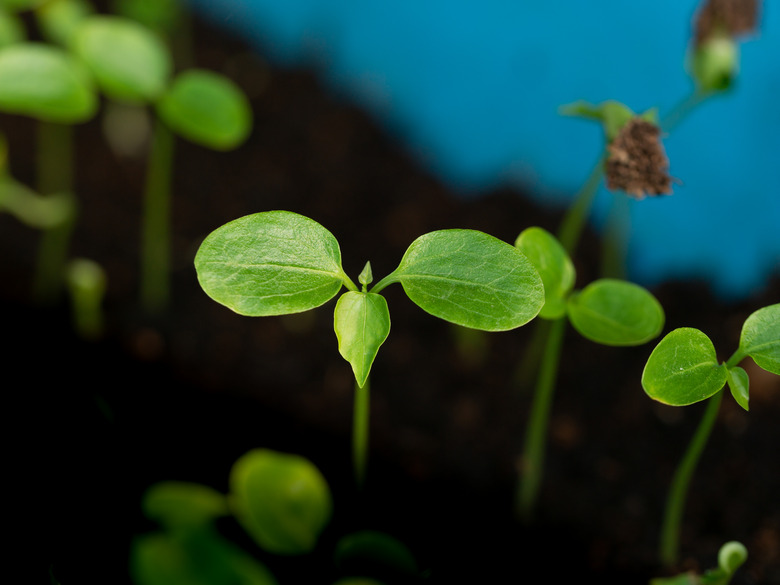What Type Of Plants Are Best For Science Projects?
At some point in your science education, you'll have an opportunity to experiment with plants. Whether that is by observing the process of germination, the path of roots in search of water, the effects of different inputs on plant growth or pollination, observing plants up close in an experimental setting reveals a lot about the processes of nature.
TL;DR (Too Long; Didn't Read)
When you choose the best plants for your science project, consider the purpose of the experiment. The plants you need vary depending on whether you need to see germination, the development of roots, the growth of the plant or pollination.
Plants for Germination Experiments
Plants for Germination Experiments
Sprouts, usually herbs that are grown to be eaten in their seedling form, are also an excellent option in order to see germination taking place en masse. Popular plants for sprouts include:
- alfalfa
- broccoli
- cress
- onions
- chives
- beets
- radish
Sprouts can also easily germinate outside of soil: they will grow on a wet paper towel in a humid but ventilated plastic container. Just make sure to wash the seeds and sterilize the growing materials beforehand, so as not to grow mold as well.
Plants for Rooting Experiments
Plants for Rooting Experiments
Bulbs and corms that are easy to obtain and use include:
- amaryllis
- lily
- iris
- daffodil
- cyclamen
- crocus
- gladiolus
Rhizomes and tubers include:
- potato
- yam
- ginger
- turmeric
- sweet potato
- dahlia
Plants for Growth Experiments
Plants for Growth Experiments
In order to test things like the effects of light, fertilizer, water levels and other variables, choose a plant that is fast-growing and quite hardy. Once again, many common garden plants fit the bill, but common choices are beans or vigorous hybrid tomato plants.
Both beans and tomatoes are quick to germinate, and their daily growth is visible with the naked eye. Experiments in changing the direction, intensity or duration of the light source, for example, will be seen quickly in the movements, also known as tropisms, of the plants. Similarly, they will show signs of water and nutrient levels in their leaves quite rapidly.
Plants for Pollination Experiments
Plants for Pollination Experiments
Pollination experiments are a bit easier to comprehend because all they require is a plant that flowers, and flowers quickly. Some of the fastest-flowering garden plants include sweet peas, marigolds, nasturtiums, nigella and sunflowers. The father of modern genetics, Gregor Mendel, used garden peas (Pisum sativum) for his experiments because they were easy to hand-pollinate.
Flowering plants can be either self-pollinating or requiring of a pollination partner, which is a different plant of the same species. Some plants have "perfect" or bisexual flowers, which contain both male and female reproductive parts. Others, like squash and cucumbers, have distinct male and female flowers.
Easy pollination experiments can also be done outdoors in the springtime when trees like apples, pears, plums and cherries are in bloom. These flowers very clearly show both male and female reproductive parts.
The plants listed above are merely suggestions: when it comes to school science projects, it can be fun to experiment with more exotic or creative fare.
Cite This Article
MLA
Grosfield, Lynsey. "What Type Of Plants Are Best For Science Projects?" sciencing.com, https://www.sciencing.com/type-plants-science-projects-8089604/. 22 November 2019.
APA
Grosfield, Lynsey. (2019, November 22). What Type Of Plants Are Best For Science Projects?. sciencing.com. Retrieved from https://www.sciencing.com/type-plants-science-projects-8089604/
Chicago
Grosfield, Lynsey. What Type Of Plants Are Best For Science Projects? last modified August 30, 2022. https://www.sciencing.com/type-plants-science-projects-8089604/
